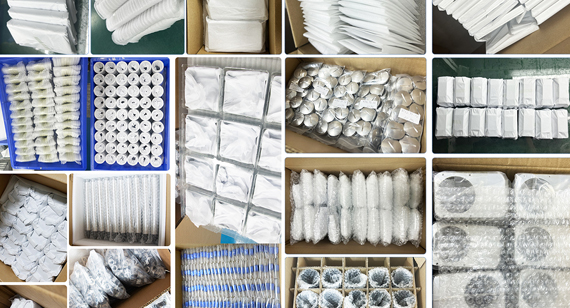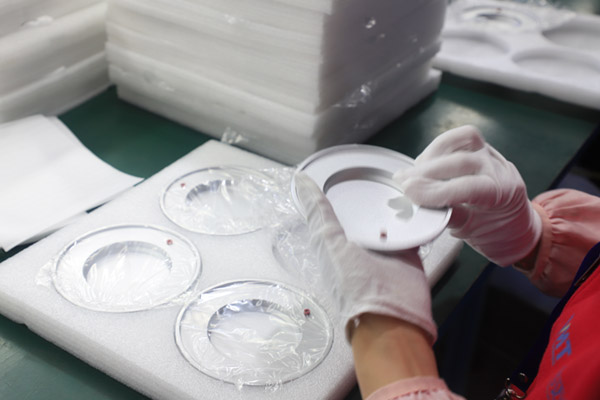15 years one-stop China custom CNC machining parts factory

Hey there I’m VMT Sam!
With 25 years of CNC machining experience we are committed to helping clients overcome 10000 complex part-processing challenges all to contribute to a better life through intelligent manufacturing. Contact us now
 592 |
Published by VMT at Jan 06 2024
592 |
Published by VMT at Jan 06 2024
Smart Strategies for Packaging and Transportation of CNC Machined Parts
1. Introduction
In the daily operations of CNC machining factories, the packaging of machined parts for shipment is a crucial aspect. Proper packaging not only protects the integrity and safety of the parts during transportation but also enhances transport efficiency while minimizing damage and waste. Therefore, understanding the roles of different packaging methods and how to choose appropriate packaging for various transportation modes is essential knowledge for CNC machining factories.

2. Primary Packaging Methods for CNC Machined Parts
Different packaging methods have their own characteristics and are suitable for CNC machining parts of different materials and needs.
Wooden Crate Packaging: Wooden crates are traditional and widely used, known for their high strength and excellent protective properties. They are particularly suitable for packaging heavy or large CNC machined parts, effectively preventing vibration, collisions, and moisture during transportation.
Cardboard Box Packaging: Cardboard boxes are lightweight and cost-effective, suitable for small or light CNC machined parts. Cardboard boxes can be enhanced with internal padding such as foam or bubble wrap, but their protective capabilities are relatively weaker compared to wooden crates.
Plastic Pallet Packaging: Plastic pallets offer good load-bearing capacity and stability, especially suitable for CNC machined parts with regular shapes. Pallets can be used in conjunction with stretch wrap or shrink wrap to form a stable packaging unit.
Vacuum Packaging: For CNC machined parts requiring rust or moisture protection, vacuum packaging is a suitable choice. By placing the parts in plastic bags and removing air, oxygen and moisture are effectively isolated, extending the shelf life of the parts.
PE Bags:PE bags, or polyethylene plastic bags, are a common plastic packaging material. They offer characteristics such as waterproofing, moisture resistance, corrosion resistance, and abrasion resistance. Therefore, PE bags are suitable for packaging small, lightweight CNC machined parts, such as metal components, especially when there is a high requirement for waterproofing and moisture resistance.
Bubble Bags:Bubble bags are primarily made from high-pressure polyethylene bubble film, cut to the required size through film cutting, and then processed into bags using a specialized machine. These bags are commonly used for cushioning electronic products, plastic products, metal products, ceramic products, glass products, and other items requiring cushioning protection during logistics and transportation. The bubble film, with countless small bubbles, provides lightweight, elastic, soundproof, shock-resistant, and scratch-resistant properties. It is widely applied in protecting items like electronics, instruments, ceramics, crafts, household appliances, automotive parts, kitchenware, furniture, hardware tools, glass products, and precision instruments during transportation, effectively preventing squeezing, vibration, and friction.
Pearl Cotton:Pearl cotton is a material composed of numerous independent air bubbles produced by physical foaming of low-density polyethylene. Overcoming the fragility, deformation, and poor recovery of ordinary foamed rubber, pearl cotton boasts advantages such as water resistance, shock absorption, sound insulation, thermal insulation, excellent plasticity, high toughness, recyclability, environmental friendliness, and strong chemical resistance. It serves as an ideal substitute for traditional packaging materials.
EPE pearl cotton foam material, being a new type of environmentally friendly packaging and filling material, is gaining increasing recognition due to its superior characteristics. Its usage is expected to expand and innovate continuously. Particularly in packaging and other industrial materials, it outperforms traditional materials in terms of performance, cost, elegance, and effectiveness. Moreover, EPE pearl cotton foam sheets can undergo deep processing by adding a layer of HDPE film, aluminum film, coated paper, or coated fabric through the pearl cotton film-coating machine and laminating machine. This not only enhances mechanical strength but also improves various original properties. It allows for printing various patterns, texts, and expands product promotional efforts.
Due to its excellent cushioning and shock absorption performance, pearl cotton is particularly suitable for packaging CNC machined parts that are prone to damage or breakage. This includes fragile items like glass and ceramics, as well as precision instruments that require special protection.
Industrial Paper Packaging:Industrial paper packaging is a common method suitable for various materials and sizes of CNC machined parts. It provides good compressive strength, moisture resistance, and shock resistance, offering effective protection. Industrial paper packaging is typically made from materials like corrugated cardboard or kraft paper, offering advantages such as low cost and environmental friendliness. For large or heavy CNC machined parts, such as machine tools or heavy machinery components, industrial paper packaging is an economical and practical choice.
Customized Packaging: Some CNC machined parts with special shapes or requirements may necessitate customized packaging solutions. This includes using special materials and designing unique internal structures to ensure the safe transportation of the parts.
In conclusion, different packaging methods have their applicable ranges and characteristics. The choice of the right packaging method should consider factors such as the material, size, and transportation requirements of CNC machined parts. Selecting the correct packaging method can provide effective protection, reduce the risk of damage, and save costs.

3. Transportation Modes and Packaging Selection
Road Transportation: Road transportation offers high flexibility and low costs, making it one of the most common modes. For short-distance or urban delivery, options like cardboard box packaging or plastic pallet packaging are suitable, being lightweight and easy for handling, facilitating quick loading and unloading.
Rail Transportation: Rail transportation is suitable for medium to long-distance and large-volume scenarios. Given the potential for multiple handling and transfers during rail transport, it is advisable to choose high-strength and protective packaging, such as wooden crate packaging or customized packaging, to resist vibration and collisions and ensure the safe arrival of parts.
Air Transportation: Air transportation is characterized by speed and efficiency but comes with relatively higher costs. For small or light CNC machined parts requiring rapid delivery, options like cardboard box packaging or plastic pallet packaging are convenient, as they are easy to pass through security procedures, facilitating quick loading and unloading.
Sea Transportation: Sea transportation is suitable for long-distance and large-volume shipments. Due to the possibility of encountering humid and salty conditions during sea transport, it is crucial to choose packaging with good sealing and moisture resistance, such as vacuum packaging or customized packaging, to effectively isolate external environmental factors and ensure the parts arrive intact.
4. Packaging Strategies for CNC Machining Factories
Clarify Packaging Requirements: CNC machining factories should first clarify the dimensions, weight, shape, transportation distance, and requirements of the parts to choose suitable packaging methods and materials.
Optimize Packaging Design: Packaging design should consider factors such as protection, stability, and convenience. Through rational design of internal structures and the use of filling materials, the protective capabilities and convenience of handling and loading/unloading can be enhanced.
Enhance Quality Control: Regardless of the chosen packaging method, it is essential to ensure the quality and reliability of packaging materials. Factories should regularly assess and audit suppliers to ensure that the packaging materials meet relevant standards and requirements.
Consider Environmental Impact and Costs: When selecting packaging methods and materials, environmental impact and costs should be taken into account. Using recyclable or biodegradable materials helps reduce environmental impact, and controlling packaging costs enhances overall economic efficiency.

5. Conclusion and Outlook
The shipment packaging of CNC machined parts is a critical step in ensuring product quality and customer satisfaction. By understanding the roles of different packaging methods and selecting appropriate packaging for various transportation modes, CNC machining factories can better protect their products, improve efficiency, and reduce costs. Looking ahead, with the continuous emergence of new materials and technologies, along with ongoing innovations in the logistics industry, we anticipate the development and application of more intelligent, environmentally friendly, and efficient solutions for the shipment packaging of CNC machined parts.

Ready To Start Your Next Project?
Get Instant Quote

Request a Free Quote
Send us a message if you have any questions or request a quote. We will get back to you ASAP!